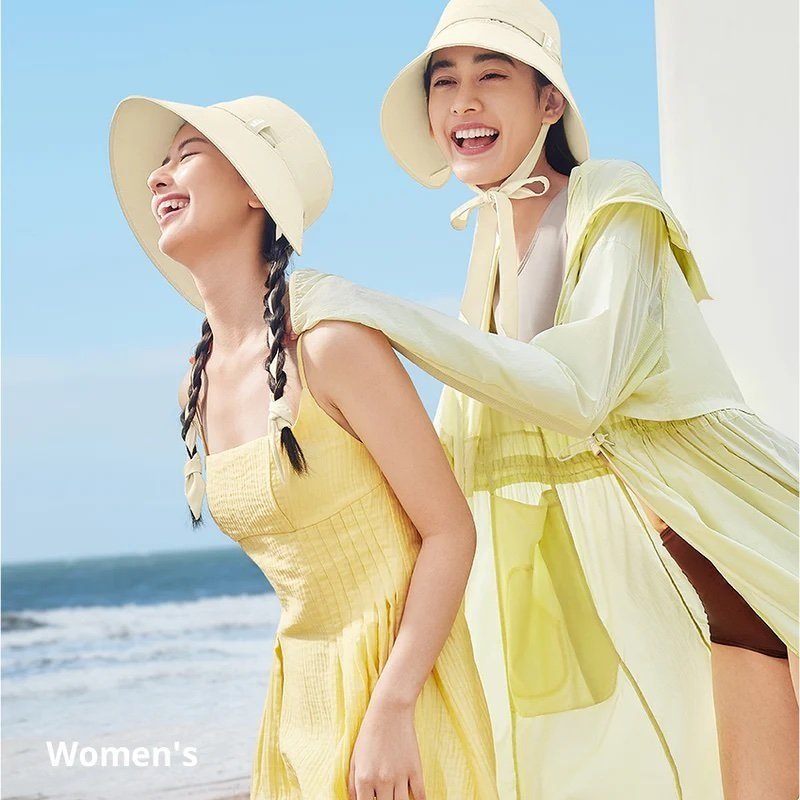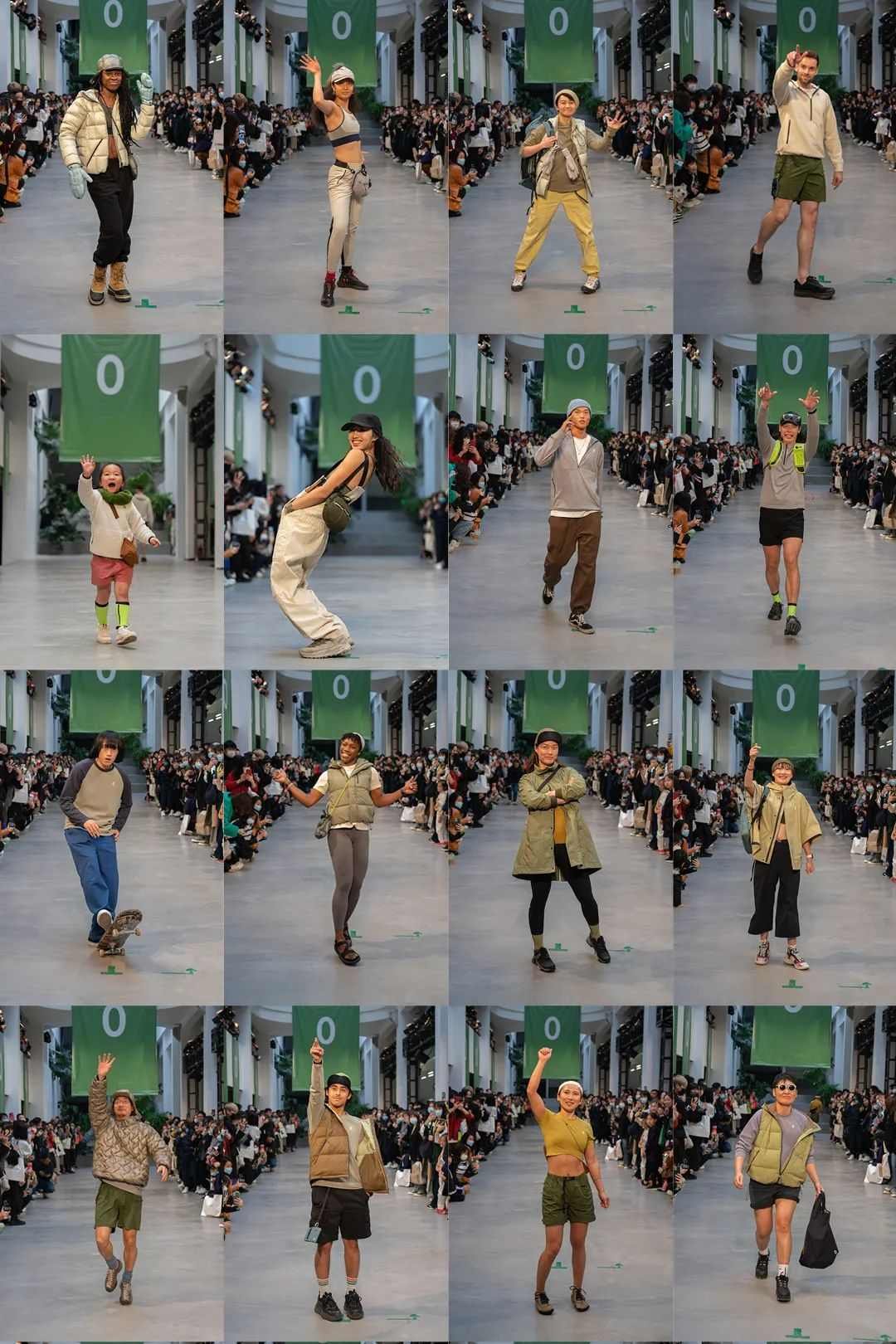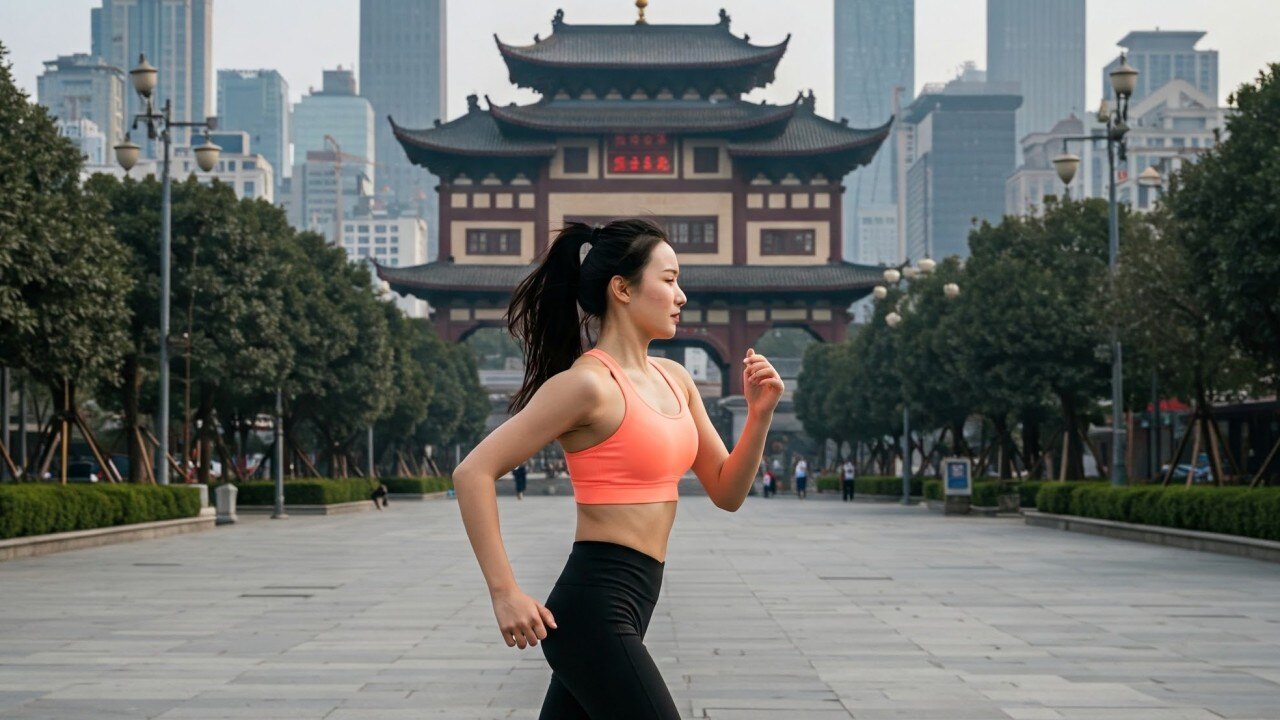Thriving Market
Outdoor activities were once a niche market in China, but the Covid-19 pandemic has sparked a surge in interest in outdoor sports, fashion, and equipment. This trend has persisted post-Covid and become a lifestyle for many. Moreover, the Chinese government’s development plan for the outdoor sports industry has further boosted the sector.
In recent years, emerging activities like camping, skateboarding, climbing, cycling, frisbee, and surfing have gained immense popularity. In 2021, China boasted 400 million outdoor sports participants. The total scale of China’s outdoor sports industry reached RMB 1.2 trillion ($170 billion) in 2023 and is projected to surpass RMB 3 trillion ($410 billion) by 2025.
Among others, outdoor clothing is the largest category in China’s outdoor market, accounting for 46% of sector sales as of 2023. Within the outdoor apparel category, jackets and sun protection clothing hold about 13% and 6% of the market share, respectively.



Images via Unsplash
Functionality Plus Fashion
The functional requirements of outdoor clothing have traditionally been drivers of its steady growth, which has been relatively unaffected by more fashion-driven considerations. In recent years, however, as more of the general public get into outdoor activities, Chinese fashion-forward consumers have also embraced outdoor styles like athleisure, gorpcore, and mountaincore, blending utility wear with urban chic, making outdoor apparel a staple in everyday wardrobes.
This shift has influenced brands’ marketing strategies, focusing on creating scenarios rather than just promoting specific products. For instance, marketing quick-drying clothes and rain boots for a weekend rafting trip showcases both functionality and fashionability.
Unmissable Local Brands
While Western brands like The North Face and Arc’teryx are popular in China, some domestic brands are highly competitive either because they have a longer history in the country or excel in domestic marketing. To succeed in the Chinese market, international brands must understand the tactics of agile domestic players. Here are five Chinese outdoor wear brands making waves in China and beyond, along with valuable strategies for growing your business in China.
#1 - CAMEL骆驼

Image via CAMEL website
Key takeaway: Camel’s extensive product range and strong online and offline presence have made it the biggest outdoor apparel brand on China’s major shopping sites like Tmall, JD.com, and Douyin. According to Hot Pot China’s eCommerce Data Tracker, Camel earned the highest net sales with RMB 4.7 billion ($650 million), doubling the second-highest, The North Face.
Founded in 1930 in Tianjin in North China, Camel began as a leather shoe brand. It entered the outdoor apparel market in 2000, offering a wide range of products from hiking shoes to sun-protective clothing. Camel’s complete supply chain, including production and R&D centres across various Chinese cities, helps lower production costs. With over 4,000 stores, Camel boasts 200 million users worldwide and is sold in more than 20 countries.
CAMEL’s success in China can be attributed to its broad product range, practical design, and established brand trust. Their products are known for their strong practicality and durability, meeting the diverse needs of outdoor enthusiasts. Moreover, CAMEL has built a robust brand reputation through consistent quality and effective marketing strategies that resonate with Chinese consumers. By understanding local market demands and continuously innovating, CAMEL has positioned itself as a reliable and versatile brand in the competitive outdoor wear market.
#2 - Beneunder蕉下

Image via Beneunder website
Key takeaway: By focusing on sun protective products, Beneunder has become the top brand in this niche. Effective marketing strategies appeal to health-conscious consumers, especially skincare-conscious women, but there appears to be a need for more focus on R&D.
Founded in 2013, Beneunder specialises in lightweight outdoor gear, particularly sun protective products. Initially targeting urban young women with its LRC-coated mini black umbrellas and sun protective jackets, Beneunder expanded its product line in 2021 to include other apparel and non-sun protective items, aiming at all age groups and genders. Its revenue reached RMB 2.4 billion ($330 million) in 2021. It has also grown its exposure from online only to 300 offline shops including a first step into international expansion via its Singapore store.
Beneunder’s success lies in understanding mainstream aesthetics in China, where fair skin is highly valued. The preference for fair skin has been ingrained in China’s beauty standards since ancient times, when pale skin was associated with nobility and less manual labour. Even today, whitening and sun protection products remain lucrative in China. In recent years, increasing health consciousness, along with the rise of beauty products for men, have created a new group of consumers for Beneunder and other sun protective brands alike. According to data released by iResearch, the market size of sun protection clothing reached RMB 74.2 billion ($10 billion) in 2023.
Beneunder’s marketing strategies such as collaborations with KOLs and celebrities have also significantly driven sales. However, relying heavily on internet popularity may not be sustainable for the brand. Some have criticised its pricing and product functionality which are critical to consumer trust and hence longevity. The brand’s previously released prospectus revealed that its annual R&D expenses accounted for only 3% of total expenditure, whereas marketing expenses accounted for 24%. For sun protection brands entering the Chinese market, product functionality cannot be sacrificed at the cost of driving mere online buzz.
#3 - TOREAD探路者

Image via TOREAD website
Key takeaway: TOREAD is known for its social responsibility and professionalism in R&D.
Founded in 1999, TOREAD offers a variety of safe and comfortable outdoor equipment from hiking, camping, to skiing. It was an official sportswear sponsor for the 2008 Beijing Olympics and has an R&D centre recognized as the strongest in the outdoor field in China.
TOREAD actively participates in social events like animal protection and disaster relief efforts. This not only advances its profile but also resonates with consumers who value corporate responsibility.
TOREAD’s success in China is significantly bolstered by its strong ties with the government and active participation in social events, which have helped establish the brand as reliable and trustworthy among Chinese consumers. TOREAD has strategically aligned itself with various government initiatives and high-profile events, enhancing its visibility and credibility.
#4 - An Ko Rau安高若

Image via An Ko Rau WeChat account
Key takeaway: An Ko Rau integrates design and lifestyle with a focus on simplicity and imagination. Collaboration across creative fields, community building, event hosting, and sustainability are key elements of its unique branding.
Launched in 2017 under the Chinese fashion house Zuc Zug, An Ko Rau targets urban athletic wear suitable for daily, casual, and fashionable use. The brand’s name, derived from Esperanto, means “perpetual motion.” An Ko Rau’s promotions often feature non-professional models or athletes to emphasise inclusivity.
The brand’s concept store on Anfu Road in Shanghai serves not just as a sales channel but also as a platform for organising outdoor activities and building communities. Spanning less than 900 metres, Anfu Road has become a trendy spot where historical meets modern Shanghai, featuring old villas, local design labels, brunch restaurants, secondhand retro brands, coffee shops, and the Shanghai Dramatic Arts Center. It attracts people with a strong sense of personal style as well as new local labels that usually started online and are looking to expand their reach offline, just like An Ko Rau.
The digital generation in China values human connections when making purchasing decisions. An Ko Rau also attracts environmentally-minded youth through sustainability efforts, including hosting secondhand sportswear swaps and sourcing fabric suppliers who use recycling technology.
#5 - KAILAS凯乐石

Image via KAILAS website
Key takeaway: KAILAS focuses on rock climbing and trail running, emphasising technological innovation and professional design. It hosts regular events to promote the sports culture.
Founded in 2003, KAILAS focuses on mountain sports. Its founder, Zhong Chengzhan, is an avid lover of outdoor and adventure sports. Despite being wheelchair-bound after a skiing injury, he never stopped enjoying sports and even designed products suitable for disabled people based on his own experiences.
KAILAS’s success in China is deeply rooted in its dedication to promoting climbing and its active support for the community. It has sponsored numerous large-scale outdoor events and developed many climbing routes, enhancing its visibility and reputation among outdoor enthusiasts. In 2023, KAILAS held 570 outdoor events. With over 1,100 employees worldwide, KAILAS has won 71 domestic and international awards and holds 21 invention patents for climbing products. The brand is also expanding beyond climbing and extreme sports, for example, by introducing down jackets suitable for different altitudes and situations.
For 17 years, KAILAS has carried out the China Unclimbed Summit Plan, organising climbing activities for mountains that have not been summited, and providing support to athletes. Earlier this year, KAILAS and three female climbers opened a new route on Dangji Snow Mountain at an altitude of 5,348 metres, naming it "Her Climb 2024" to celebrate female climbers. This commitment to advancing the sport, supporting athletes, and promoting inclusivity has solidified KAILAS’s position as a trusted and influential brand in the Chinese climbing wear market.
Deconstructing Success in China:
The Booming Fitness Market
For today's sports, fitness and athleisure brands, success in China isn’t about applying a one-size-fits-all approach. It’s about deconstructing your brand’s DNA and rebuilding it with local cultural relevance while maintaining brand integrity.
Discover real data, proven strategies and expert insights to help brands unlock growth in China with our latest ebook.
Conclusion
In the competitive landscape of China’s outdoor wear market, brands like Beneunder, CAMEL, TOREAD, An Ko Rau, and KAILAS have demonstrated remarkable success through unique strategies and strong market presence. Understanding the changing and specific preferences of Chinese consumers is critical to success in this market. These brands have excelled by innovating their product offerings, aligning with government initiatives, actively participating in social and outdoor events, and fostering strong brand identities and communities.
To benefit from local-market tactics and outmanoeuvre international competition, it’s essential for brands to adapt to local consumer behaviours and leverage the strategies employed by these successful domestic players.
To discuss bespoke China marketing strategies and commercial growth for your brand, contact the Hot Pot team: nihao@hotpotchina.com.
Related blog posts


